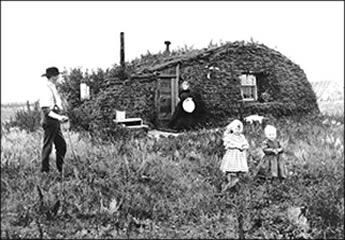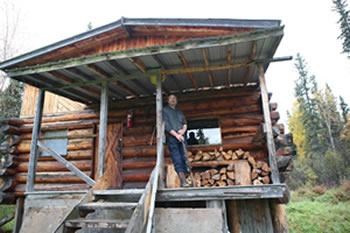|
"An allusion has been made to the Homestead Law. I think it worthy of consideration, and that the wild lands of the country should be distributed so that every man should have the means and opportunity of benefitting his condition." — Abraham Lincoln, 1861 
Library of Congress The Homestead Act of 1862In the mid 1800's, with economic and social changes gripping the developed eastern states of the union, people were increasingly looking west to the vast underdeveloped lands and the romantic vision of a new opportunity. The US government had tried in the past to make land in the west available for private purchase but the costs were still prohibitive for many families and settlement of the west had been slow. The idea to provide free land to homesteaders willing to develop the land was eventually introduced and met with some resistance, but finally in 1862 president Abraham Lincoln signed the Homestead Act into existence and the law took effect on January 1st 1863. The new legislation made 160 acres of land in one of the western states or territories available to people willing to live on the land for 5 years, develop the land for agriculture and build a house on the land. At the end of 5 years, if those requirements had been accomplished, that person could then receive full ownership of their 160 acre parcel. This opportunity would continue for over 123 years and prove instrumental in not only developing the western states but allowing millions of Americans to own their own private parcel of land. Find out more about the history of the Homestead Act, and also Stories of Alaska Women Homesteading. 
NPS Photo Homesteading in AlaskaAlthough the Homestead Act was enacted in 1862, it was not until 1898 that special legislation extended the provisions of the act to the territory of Alaska. Even with the lure of free land however, homesteading in the remote territory was slow to start due to poor weather and poor soils and by 1914 less than 200 homestead applications had been filed in Alaska. A surge did come however in Alaska homestead applications after WWII and the Vietnam War. Those 20th century pioneers were looking for the same land ownership opportunity that had lured settlers out to the western states 100 years before. They also encountered many of the same hardships as their homesteading brethren of the 19th century such as lack of transportation, harsh weather, and even the danger of local wildlife. The Homestead Act was finally repealed in 1976, but a provision of the repeal allowed for homesteading to continue in Alaska until 1986.The last Homestead to be awarded under the provisions of the Homestead Act was in 1988. The owner of that land, Kenneth Deardorff originally filed for his 80 acre parcel on the Stony River in Alaska in 1974. He and his family built a life in the remote roadless Alaska wilderness through persistence and by subsisting off the local landscape. By the time Kenneth Deardorff finally received the patent for his land in 1988, 3,277 homesteads had been conveyed in the state which equaled over 360,000 acres or less than 1% of the total land in Alaska. Find out more about the Last Homestead 
BLM Photo/Dennis Linghor Over 150 Years of HeritageThe Homestead Act proved to be one of the most influential pieces of legislation in development of the American west. The effects of millions of Americans picking up their lives and moving to new strange lands where they had to make a new life with little more then their own sweat and persistence has been far reaching in the history of the country. By 1988 when the last homestead land was finally conveyed, roughly 10% of the total land in the U.S. had been given away as homesteads and estimates put the number of descendants of homesteaders alive today at 93 million people (as of 2007). Although homesteading itself is no longer a thing, some people still try to live that lifestyle of working and living off the land. We will always cherish the fact that homesteading is an important part of Alaska's culture and history. |
Last updated: March 7, 2024
